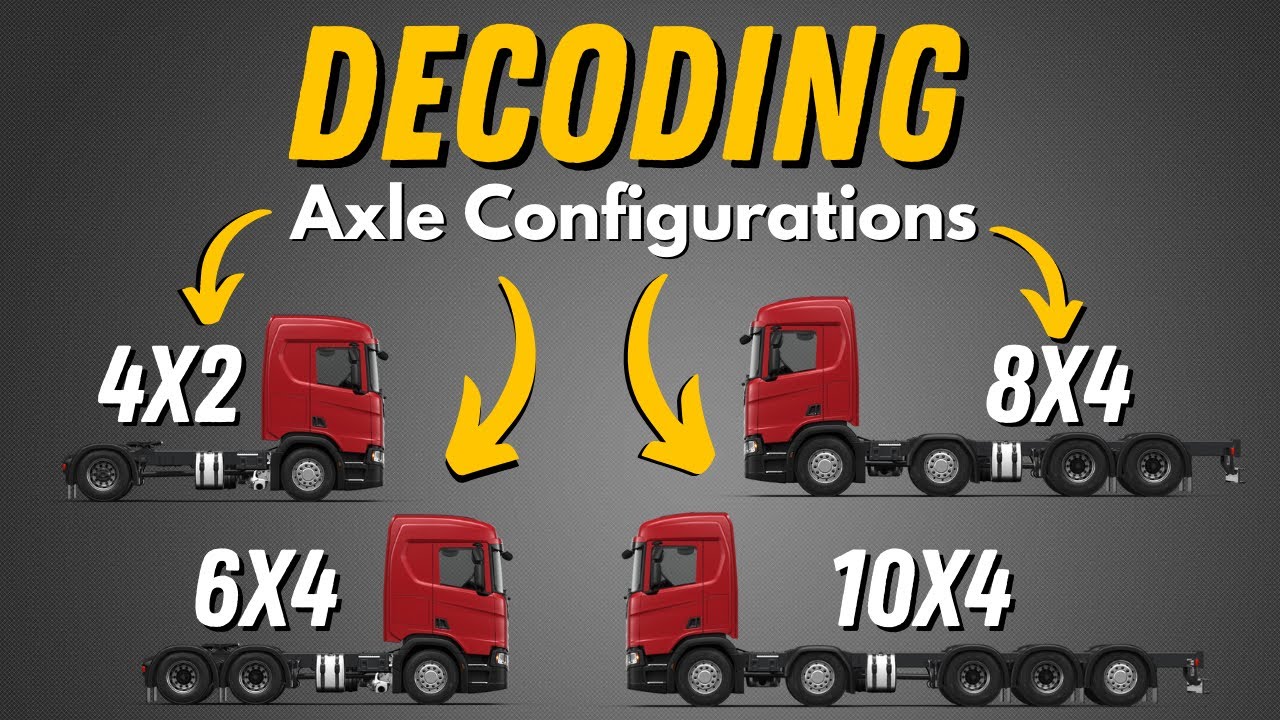What Does 4x2 Mean In Trucks

Alright, let's dive into understanding what "4x2" means when we're talking about trucks. It’s a seemingly simple designation, but it tells you a fundamental aspect of a vehicle's drivetrain configuration – its drive wheels. Grasping this is crucial for everything from choosing the right truck for your needs to understanding how to properly maintain and potentially modify it. This isn't just about bragging rights; it directly impacts performance, fuel efficiency, and handling, especially in different driving conditions.
Purpose – Why Understand 4x2?
Knowing what 4x2 signifies is essential for several reasons:
- Vehicle Selection: If you live in an area with frequent snow or off-road terrain, a 4x2 might not be the best choice. Understanding this notation helps you pick a vehicle appropriate for your driving conditions.
- Maintenance & Repair: Knowing your drivetrain configuration helps you pinpoint potential issues. If your 4x2 truck is struggling on a slight incline, knowing it's not a 4x4 rules out certain transmission or transfer case problems.
- Modifications: If you're considering lifting, upgrading tires, or even converting to a different drivetrain, understanding the existing 4x2 system is paramount.
- Troubleshooting: When diagnosing drivetrain issues, knowing the wheel-drive configuration is critical for narrowing down the potential problem areas.
Key Specs and Main Parts
The "4x2" designation is a shorthand notation. Let's break it down:
- The first number (4) represents the total number of wheels on the vehicle.
- The second number (2) represents the number of driven wheels, meaning the wheels that receive power from the engine to propel the vehicle forward.
Therefore, a 4x2 truck has four wheels in total, with only two of them being powered. This is typically, but not always, the rear wheels. In a 4x2 configuration, the main parts involved are:
- Engine: The source of power.
- Transmission: This gearbox manages the engine's output, providing different gear ratios for varying speeds and loads.
- Driveshaft: A rotating shaft that transmits power from the transmission to the rear axle (in a typical rear-wheel-drive 4x2 truck).
- Rear Axle/Differential: The differential is a crucial component within the rear axle. It allows each wheel on the axle to rotate at different speeds, which is essential when turning. Without a differential, the inside wheel would have to slip, causing instability and tire wear.
- Wheels and Tires: These are the ultimate contact points with the road, transferring the power from the axle into motion.
How It Works
The power flow in a 4x2 truck is relatively straightforward:
- The engine generates power.
- The power is transmitted to the transmission, which selects the appropriate gear ratio.
- The transmission sends the power through the driveshaft.
- The driveshaft turns the differential in the rear axle.
- The differential distributes the power to the rear wheels, causing them to rotate and propel the vehicle forward.
It's crucial to note that the front wheels in a 4x2 truck are not driven. They simply rotate freely, steered by the driver.
Real-World Use – Basic Troubleshooting Tips
Here are some basic troubleshooting tips specific to a 4x2 setup:
- Poor Traction: If you're experiencing wheel spin on slippery surfaces (snow, ice, gravel), it's because only two wheels are trying to grip. This is a limitation of the 4x2 system. Adding weight to the rear of the truck can sometimes improve traction.
- Driveshaft Vibration: If you feel vibrations, particularly at higher speeds, inspect the driveshaft for damage (dents, bends) or worn U-joints (universal joints). These joints connect the driveshaft to the transmission and rear axle, allowing for movement.
- Differential Noise: Unusual noises (whining, clunking) coming from the rear axle area could indicate a problem with the differential. Check the differential fluid level and condition. Low or contaminated fluid can lead to rapid wear.
- Transmission Slipping: If the engine revs up without the truck accelerating properly, the transmission might be slipping. This can be caused by low transmission fluid, worn clutch plates (in manual transmissions), or other internal damage.
Safety – Highlight Risky Components
When working on a 4x2 truck, especially the drivetrain, several components require extra caution:
- Driveshaft: The driveshaft rotates at high speeds and can cause serious injury if it comes loose or if clothing gets caught in it. Always disconnect the battery before working near the driveshaft and ensure the truck is securely supported on jack stands.
- Differential: Differential fluid can be hot and potentially corrosive. Wear appropriate gloves and eye protection when handling it. Also, be aware that the differential can contain heavy gears and components.
- Transmission: Transmissions are heavy and complex. Use proper lifting equipment and consult a repair manual before attempting any major repairs. Automatic transmission fluid is also potentially harmful and should be handled with care.
- Springs and Suspension: While not directly part of the 4x2 designation, the rear suspension components on a truck can be under significant tension. Use caution when working around springs or attempting to disassemble suspension components. Always use spring compressors where appropriate.
In Conclusion
Understanding the 4x2 designation is a fundamental step in becoming a more informed and capable vehicle owner. It empowers you to choose the right vehicle, diagnose potential problems, and even explore modifications with confidence. Remember, safety is always paramount. If you're unsure about any repair or modification, consult a qualified mechanic.
We have a detailed diagram illustrating the 4x2 drivetrain system, complete with labeled components and flowcharts, available for download. This visual aid can further enhance your understanding and serve as a valuable reference for future projects. Feel free to reach out, and we'll gladly provide you with the link.
